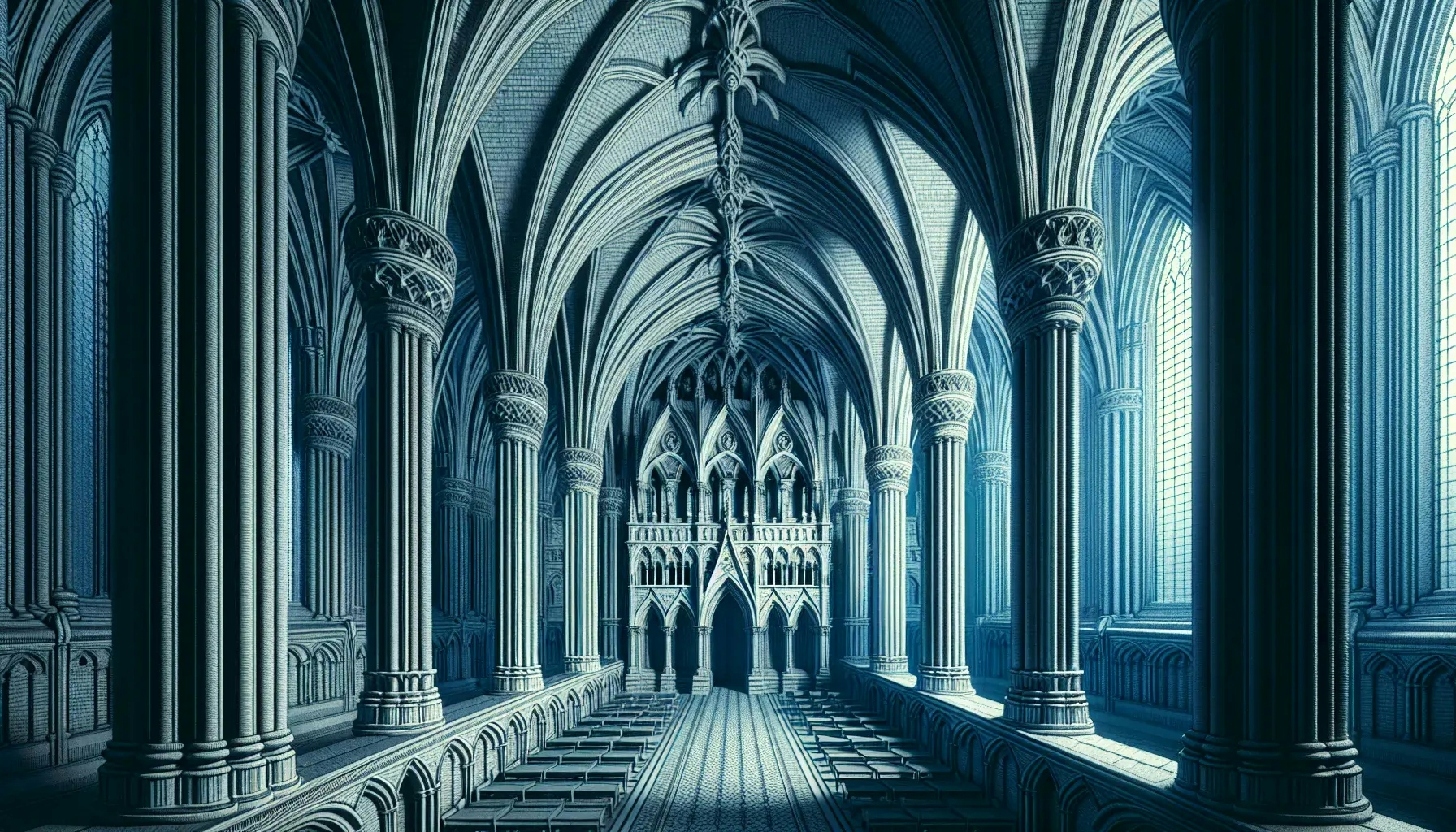History of Gothic Architecture
Architect Today

Welcome to a journey through time, exploring the rich and intricate history of Gothic architecture. This blog post will take you from the birth of this unique architectural style in the Middle Ages to its revival in the 19th century, and its enduring influence on modern architecture. We'll delve into the key characteristics, iconic structures, and the cultural and historical context that gave rise to this fascinating architectural movement.
The Dawn of Gothic Architecture
The story of Gothic architecture begins in the heart of medieval Europe. The 12th century marked a period of significant cultural and economic growth, leading to the emergence of a new architectural style. This style, later known as Gothic, broke away from the rounded arches and thick walls of the preceding Romanesque period. Instead, it embraced pointed arches, ribbed vaults, and flying buttresses.
The Abbey Church of Saint Denis near Paris is often considered the first Gothic structure. Abbot Suger, who oversaw the church's reconstruction, aimed for a design that allowed more light into the building. This desire for luminosity led to the development of the pointed arch, a defining feature of Gothic architecture. The pointed arch, along with the ribbed vault and the flying buttress, allowed for taller, more open structures filled with light.
The spread of Gothic architecture across Europe was swift. By the late 12th century, it had become the dominant style for cathedrals and abbeys. The style's adaptability to local traditions and materials contributed to its widespread acceptance.
Key Characteristics of Gothic Architecture
Gothic architecture is distinguished by several key features. The first is the pointed arch, which allowed for greater height and more open interiors. The ribbed vault, another defining feature, is a framework of diagonal arches that intersect at the highest point of the vault. This design distributes the weight of the ceiling across the building's pillars, allowing for thinner walls and larger windows.
The flying buttress, an external support system, is another iconic element of Gothic architecture. These buttresses counteract the outward force of the vault, allowing for the construction of taller, more slender buildings.
Gothic architecture is also known for its elaborate ornamentation. Sculptures, stained glass windows, and intricate stone carvings are common features. These elements often depict religious scenes, reflecting the style's ecclesiastical origins.
Iconic Gothic Structures
Gothic architecture has given us some of the world's most iconic structures. Among them is the Notre-Dame Cathedral in Paris, a masterpiece of French Gothic architecture. Its construction began in the 12th century and took nearly two centuries to complete. The cathedral's flying buttresses, rose windows, and intricate sculptures make it a quintessential example of the style.
The Cathedral of Chartres, another French Gothic marvel, is renowned for its stained glass windows. These windows, some of the best-preserved from the medieval period, fill the cathedral with a kaleidoscope of colors.
In England, the Canterbury Cathedral and the York Minster showcase the English Gothic style. Both cathedrals feature pointed arches, ribbed vaults, and flying buttresses. However, they also incorporate elements unique to English Gothic, such as the Perpendicular style's emphasis on vertical lines.
The Gothic Revival
The Gothic style fell out of favor in the 16th century, replaced by the Renaissance emphasis on classical Greek and Roman aesthetics. However, the 19th century saw a resurgence of interest in Gothic architecture, known as the Gothic Revival.
The Gothic Revival was more than a return to medieval aesthetics. It was a reaction against the industrialization of the 19th century, a longing for a perceived simpler, more spiritual time. The movement was particularly strong in England, where architects like Augustus Pugin championed the Gothic style as morally superior to the classical styles.
The Houses of Parliament in London, designed by Pugin and Charles Barry, is a prime example of Gothic Revival architecture. Its pointed arches, ribbed vaults, and intricate ornamentation echo the medieval cathedrals, but on a scale and with a level of detail made possible by 19th-century technology.
Gothic Architecture Today
The influence of Gothic architecture continues to be felt today. Modern architects often incorporate Gothic elements into their designs, creating a fusion of old and new. The Tribune Tower in Chicago, for example, features Gothic-inspired buttresses at its crown.
Gothic architecture also continues to inspire through its existing structures. Cathedrals and churches in the Gothic style remain places of worship, tourism, and study. Their enduring appeal is a testament to the style's ability to inspire awe and reverence.
The Legacy of Gothic Architecture
The legacy of Gothic architecture is far-reaching. It has shaped our cities and our understanding of what architecture can be. The style's emphasis on verticality and light has influenced countless architects, from the builders of medieval cathedrals to modern skyscraper designers.
Gothic architecture also continues to captivate us with its beauty and complexity. Its intricate ornamentation, soaring heights, and luminous interiors evoke a sense of wonder and transcendence. Whether we're marveling at a medieval cathedral or a modern building inspired by Gothic design, we're engaging with a tradition that has been enriching our built environment for centuries.
Reflecting on the Journey of Gothic Architecture
As we trace the path of Gothic architecture through history, we see a style that has evolved and adapted, yet remained true to its core principles. From its origins in the medieval period to its revival in the 19th century and its influence on modern architecture, Gothic architecture has left an indelible mark on our built environment. Its legacy continues to inspire architects and captivate those who appreciate the beauty and complexity of design.